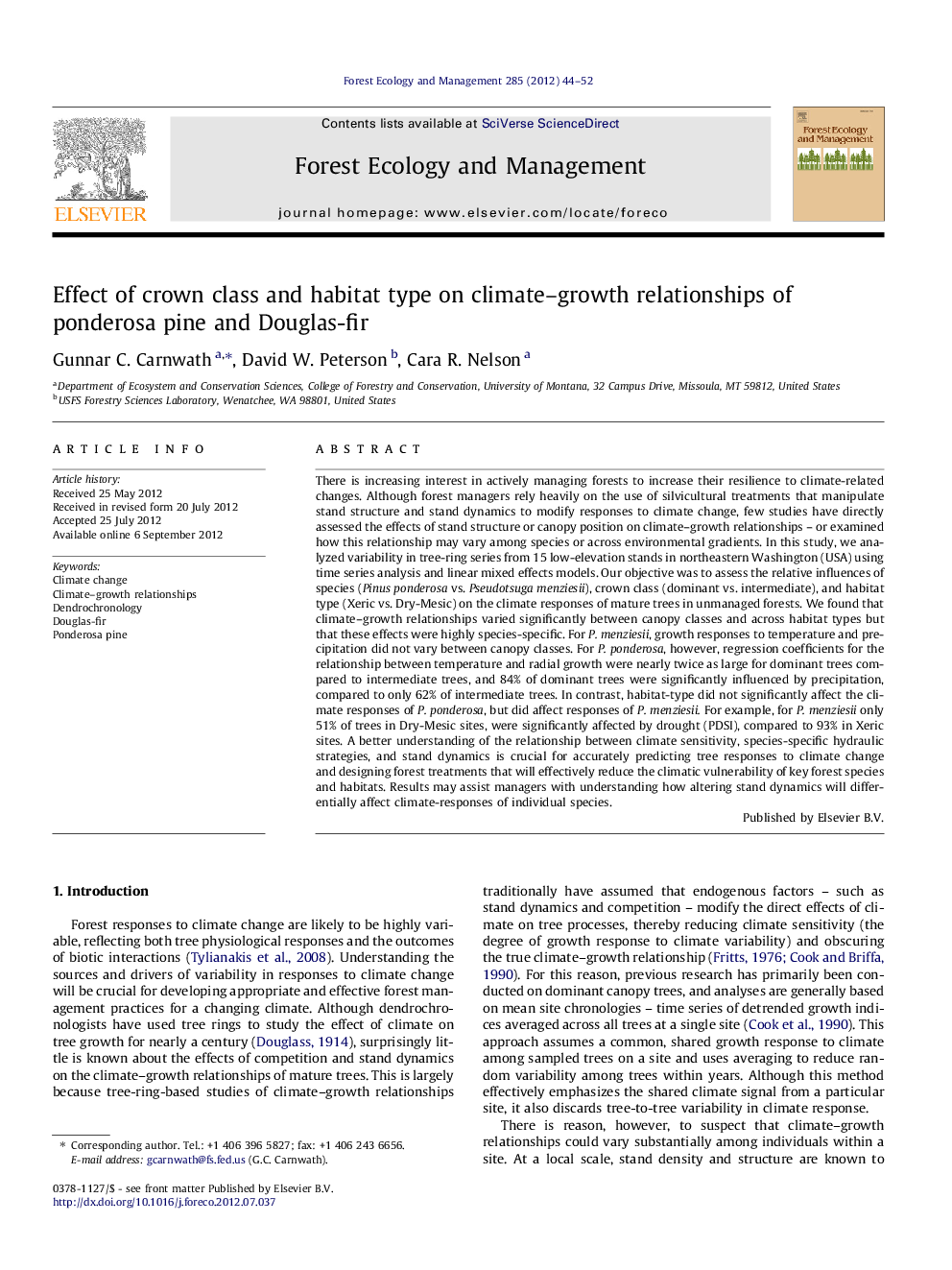| کد مقاله | کد نشریه | سال انتشار | مقاله انگلیسی | نسخه تمام متن |
|---|---|---|---|---|
| 87194 | 159237 | 2012 | 9 صفحه PDF | دانلود رایگان |

There is increasing interest in actively managing forests to increase their resilience to climate-related changes. Although forest managers rely heavily on the use of silvicultural treatments that manipulate stand structure and stand dynamics to modify responses to climate change, few studies have directly assessed the effects of stand structure or canopy position on climate–growth relationships – or examined how this relationship may vary among species or across environmental gradients. In this study, we analyzed variability in tree-ring series from 15 low-elevation stands in northeastern Washington (USA) using time series analysis and linear mixed effects models. Our objective was to assess the relative influences of species (Pinus ponderosa vs. Pseudotsuga menziesii), crown class (dominant vs. intermediate), and habitat type (Xeric vs. Dry-Mesic) on the climate responses of mature trees in unmanaged forests. We found that climate–growth relationships varied significantly between canopy classes and across habitat types but that these effects were highly species-specific. For P. menziesii, growth responses to temperature and precipitation did not vary between canopy classes. For P. ponderosa, however, regression coefficients for the relationship between temperature and radial growth were nearly twice as large for dominant trees compared to intermediate trees, and 84% of dominant trees were significantly influenced by precipitation, compared to only 62% of intermediate trees. In contrast, habitat-type did not significantly affect the climate responses of P. ponderosa, but did affect responses of P. menziesii. For example, for P. menziesii only 51% of trees in Dry-Mesic sites, were significantly affected by drought (PDSI), compared to 93% in Xeric sites. A better understanding of the relationship between climate sensitivity, species-specific hydraulic strategies, and stand dynamics is crucial for accurately predicting tree responses to climate change and designing forest treatments that will effectively reduce the climatic vulnerability of key forest species and habitats. Results may assist managers with understanding how altering stand dynamics will differentially affect climate-responses of individual species.
► Environmental factors influencing climate–growth relationships of Pinus ponderosa and Pseudotsuga menziesii are examined.
► Climate–growth responses were modified by habitat type for Douglas-fir and by canopy position for ponderosa pine.
► Climate responses correspond with species-specific life-history traits and drought tolerance strategies.
Journal: Forest Ecology and Management - Volume 285, 1 December 2012, Pages 44–52